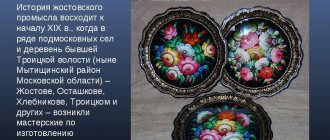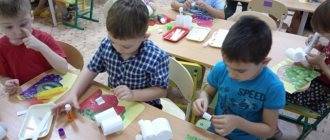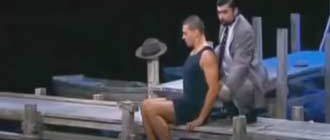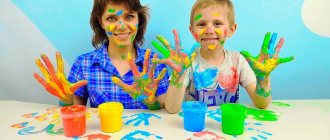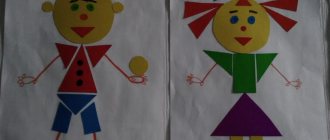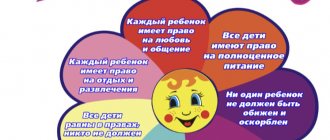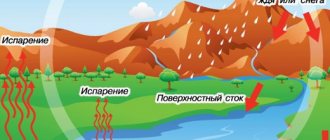Description
The profession of an artist is a creative work that requires good imagination, inspiration and mastery of drawing techniques. There are a lot of areas of artistic activity, so the profession has a number of narrower specializations:
- Illustrator. A specialist who creates pictures that describe text.
- Graphic artist. A master working in one contrasting color. Most often it is black. Pencil, ink, etc. are used for drawings.
- Cartoonist. This is a specialist who creates funny portraits or parodies of current events.
- Painter. The name of this industry is the most ancient and it is characterized by drawing from life.
- Fashion designer. This specialist specializes in creating sketches of new clothing collections. An artist who designs an outfit, a trendsetter.
- Copy artist. A specialist who creates copies of paintings and reproductions.
- Restoration artist. These specialists know exactly how to restore masterpieces to their original appearance.
- Specialist in the field of miniature painting.
- Portrait artist. This is working with people in order to fully convey their external characteristics. The transfer can be partial, it all depends on the style in which the master works.
There are many other equally popular areas of activity. The specifics of work in each of them have a number of differences. But one thing remains common - the art of conveying thoughts and fantasies through drawing.
What specialties to study?
In order to become an artist, it is not necessary to receive an education. The main thing is talent, but the absence of a diploma will not allow you to get a good job. Therefore, you should enroll in the following specialties:
- graphic arts;
- design;
- painting;
- artist of monumental and decorative art (painting);
- arts and crafts and folk crafts;
- theatrical and decorative arts;
- fine arts and drawing.
There are other highly specialized specialties.
Summary of educational activities for speech development for children in the preparatory group for school. Profession: Artist
Summary of continuous educational activities on speech development “All works are good.
Artist" for children of the preparatory school group. Author: Gulnaz Mansurovna Minachetdinova, senior teacher, MBDOU “Kindergarten No. 22 “Zhuravlyonok” in the city of Novocheboksarsk, Chuvash Republic. Description of work: Summary of a lesson on speech development “All works are good. The Artist" is addressed to teachers of preschool educational organizations. The lesson notes on the educational field “Speech Development” are intended for use in a preparatory group for school (children 6-7 years old). Duration: 25-30 minutes. Goal: To develop children's speech activity. Objectives: Improve dialogic and monologue forms of speech, the ability to coordinate words in gender, number, and case. Practice the pronunciation of the sound [Ш] in words, and the pronunciation of pure phrases to automate the sound [Ш]. Continue to practice your ability to write stories according to plan. Continue to expand ideas about the work of adults, about the profession of an artist. Continue to expand children's horizons, intelligence, thinking, visual and auditory attention, and activate children's vocabulary. Vocabulary work: artist, draws, writes, paints, picture. Benefits: illustration cards. Progress: Educator: Guys, listen, what an interesting riddle poem I learned and want to tell you. 1. Reading a riddle poem He paints the landscape, He will paint our portrait. He has an easel and a tripod. Here he takes a pencil... It’s immediately clear to everyone... (artist) (author Marina Abina) Educator: Have you guessed about the person of what profession this poem is a riddle? Children's answers. Educator: That's right, this is an artist. Educator: What do you know about the profession of an artist? Children's answers. Educator: I propose to talk about who an artist is and what he needs for his work. 2. Exercise “What does an artist need to work?” Educator: Guys, look at the picture and name those items that the artist does not need to create paintings.
Children's answers (tire, spring, chess, spoon, scissors) 3. Making riddles. Educator: Now guess the riddles, the riddles are the tools and materials that an artist needs to work. 1. He can be very sharp and draws brightly and colorfully. The slate is surrounded on all sides by Wood. This is your reliable friend And the artist - ... (pencil) 2. I am creating a new color, I look like a tablet. The paint that is not in the box can be made by the artist himself. He will mix the paints cunningly With the help of me - ... (palette) 3. Whose fluffy thin nose transfers different colors of paint to the picture, So that a portrait of a cat appears? (brush.) Children's answers Educator: Well done guys, you solved all the riddles. 4. Exercise “True or false?” Educator: Guys, do you remember well what an artist does and what he uses to paint his pictures? Let's check. I will say a sentence, and you will say this statement is true or false. 1. The artist picked up a pencil and began to paint with watercolors (incorrect) 2. The artist mixed paints on a palette (correct) 3. The artist mixed white and green paint to get light green (correct) 4. An eraser is needed to draw (incorrect) ) 5. The artist mixed black and white paint to get yellow (wrong) 6. It is convenient for the artist to display paintings on an easel (correct) 7. The artist mixed white and red paint to get green (wrong) Children's answers. 5. Exercise “Let’s help the artist” Educator: Look, guys (pay attention to the illustration). The artist decided to paint a still life in which vegetables, fruits or berries would be depicted only with the sound [Ш]. Let's help him take them away. Name vegetables, fruits or berries whose name contains the sound [Ш] for a still life. (answer: cherry, pear)
Children's answers. 6. Physical education minute “Holding a brush” Teacher: Let’s show how to hold and use a brush - (perform movements accompanied by the accompanying text) Hold the brush like this: (Arm bent at the elbow, imitation of holding a brush with three fingers) Is it difficult? No, it's nothing! Right - left, up and down (Movement of the hand to the right, left, up and down) Our hand ran. And then, and then (performing circular movements with the brush) The brush runs in a circle. (performing an imitation of poking on a sheet) Spun like a top. After a poke comes a poke! 7. Exercise “Say a clean sentence” Teacher: Listen and repeat after me Shi - shi - shi - here are the colored pencils Ash - ash - ash - yellow pencil Shom - shom - shom - I’m drawing a cat with a pencil Ash - ash - ash - the pencil is broken 8. Exercise “One - Many” Educator: An artist needs a lot of different tools and materials. Let us remember that there are many, and that there is one or one: one brush, and many...(brushes) one pencil, and many...(pencils) one palette, and many...(palettes) one easel, and many (easels) one eraser, and there are many (erasers) one picture, and there are many (paintings) Children's answers. 9. Exercise “Make a story” Educator: What do you know about the profession of an artist, what can you tell? Tell us: 1.Who is an artist? 2.Where does he work? 3. What does an artist do? 4. What tools and equipment does he need to work? 5.Who benefits from his work, why is the profession of an artist important? Children's stories. 10. Summing up. Educator: Guys, what was the most interesting for you? What was difficult, difficult? What would you tell your parents? Which one of you would like to become an artist?
We recommend watching:
Summary of GCD in the middle group on the topic: Profession of a pastry chef Summary of the lesson in the middle group. Profession postman Targeted excursion to the kindergarten kitchen “What is the cook cooking for us for lunch?” Quiz game for children in the middle group of kindergarten on the topic: Professions
Similar articles:
Summary of lessons in kindergarten in the 2nd junior group. Doctor's profession
Lesson in the middle group of kindergarten. Professions of rural people
Children about the medical profession
Children about the lifeguard profession
About the profession of a museum worker for children
Where to study
You can get an art education in universities, art schools, or at home from experienced masters of fine art. The following institutions are considered the most prestigious for obtaining such a specialty:
- St. Petersburg State University of Technology and Design.
- Moscow State University of Design and Technology.
- Tolyatti State University.
- Arctic State Institute of Arts and Culture.
What do you have to do at work and specializations?
Daily responsibilities are quite extensive and largely depend on the specialist’s specialization. However, there is also a range of processes common to all specialists:
- Search for customers. The artist himself does this. To do this, he participates in exhibitions and presentations. Also, the search for customers is often carried out via the Internet. Many artists work as freelancers.
- Meeting customers and finding out their needs. Often clients order paintings as gifts, illustrations, portraits, caricatures. The artist must understand as clearly as possible what the clients want. In addition, it is important to demonstrate your work so that customers understand the style in which the author writes. After all, most of the names are not clear to ordinary people. It is precisely because of such mistakes that conflict situations arise.
- Thinking over the concept of a future work. The artist thinks through what he would like to depict and in what context.
- Purchase of necessary materials.
- Creating a sketch. This is a general outline of the future picture, with a visualization of the future location of key objects. It can be compared to a utility diagram.
- The actual drawing process itself. This is the longest stage. It is usually tied to deadlines. The creative process can take place over several months and even years.
- Framing the picture and preparing for delivery.
- Delivery of completed work and settlement with the buyer.
This is far from a complete range of artist responsibilities. It can only expand and increase depending on the specialization of the master.
Who is this profession suitable for?
This profession is suitable for creative people with a well-developed imagination. A true artist knows how to draw inspiration from everything that surrounds him and interpret his emotions into works of fine art.
In addition, self-organization is an important quality for any artist. After all, the working day is mainly structured depending on orders and inspiration. A master must be able to force himself to work even through “I don’t want to.”
Communication skills are very important. After all, an order depends 50% on whether the creator of works of art can please future customers.
Drawing a portrait of an artist
Of course, the basis for the success of an artist of any specialization is talent. Without it, it is impossible to create something that will evoke admiration not only from the author himself, but also from customers or ordinary observers. But talent is not a guarantee of success, it is the foundation for an artist, and only in combination with other personal qualities and skills is a professional future possible.
These include:
- Fantasy and rich imagination: an artist must be able to create something unique, original, and not just copy the works of other creators.
- Artistic taste, a sense of harmony: any creation is a combination of harmoniously selected colors and details, otherwise it would be difficult to call it a creation.
- Hard work: an artist's work is the result of his imagination and love for his work. To create something truly worthwhile, you need to make more than one attempt, spend a lot of time and be extremely focused.
- Observation: the artist easily notices even the smallest details both in the world around him, being inspired by them, and in his own works, he draws every little detail.
- Determination and perseverance: imagine if great artists threw their brushes aside every time they didn't succeed? We would never have seen their greatest creations, but the desire to finish what they started did its job. Anyone who sees a clear goal is able to achieve success in their work.
- Visual-figurative thinking, spatial imagination: they help to make unusual things out of ordinary things, to put details into a general concept.
- Color perception: the artist must be able to distinguish colors and correctly combine them with each other.
- The ability to accept criticism: creative activity, like any other, implies certain failures, because not everything always works out the first time. Plus, art is a matter of taste, and you shouldn’t hope that everyone will like your work. There will definitely be critics, and that's completely normal.
As a rule, a love of drawing and most of the listed qualities appear from an early age, but it is rare that childhood hobbies develop into a profession, although you can become an artist after graduating from a specialized educational institution.
Demand
The demand for a profession directly depends on specialization. But if we take it in a general sense, it is very low. Basically, artists are freelance painters and work for themselves.
How much do people working in this profession earn?
Earnings directly depend on the employment and demand of the master. If you were able to find a permanent job in a printing company, publishing house or design firm, then you will have an income of 15 to 70 thousand rubles per month.
Freelance creators have an absolutely unpredictable level of income. They may not earn anything for months, or they may make huge amounts of money in just a few weeks.
Is it easy to get a job?
Finding a job is quite problematic due to low demand. If you manage to find a vacancy, then at the interview it is important to show yourself as the most creative and responsible person. Be sure to take your portfolio with photographs of the most striking and successful works.
You may be offered a test task, the completion of which will determine your employment.
How does one usually build a career?
Being an artist is not a profession for careerists. Usually there is no growth, but you can reach heights if you constantly develop and take part in competitions. The peak of your career can be your own exhibitions or the opportunity to teach other less experienced artists.
Prospects for the profession
There are prospects in every profession and an artist is no exception. It is important to be able to break into the elite of fine arts. To do this, you should take part in all kinds of fine art competitions and festivals. This will give you the opportunity to develop connections and get wealthy customers. In the future, substantial fees and recognition of your skill are possible, accompanied by the opening of your own gallery or art school. This is the apogee of the artist's career.
If you still have even the slightest doubt that the profession of an artist is right for you, then we strongly recommend taking a career guidance test from Profguide . It costs mere pennies, and at the same time allows you to avoid mistakes that can go in the wrong direction and cripple your whole life. Find out more >>
Preview:
State budgetary educational institution of the Samara region
Basic secondary school No. 21
The cities of Novokuybyshevsk, Novokuybyshevsk urban district, Samara region
Structural unit “Kindergarten “Gvozdichka”
"Introduction to the profession of an artist"
Prepared by teacher of the highest qualification category Kuchina V.K.
Topic: “Introduction to the profession of an artist”
Educational areas: “Cognitive development”, “Artistic and aesthetic development”, “Speech development”
- introduce children to the profession and creativity of an artist, genres of fine art; enhance cognitive activity;
- to form in children a positive emotional attitude towards visual activity;
- develop fine and gross motor skills;
- encourage the use of a variety of means of expression;
- to instill in children respect for the work of an artist;
- develop children's coherent speech

